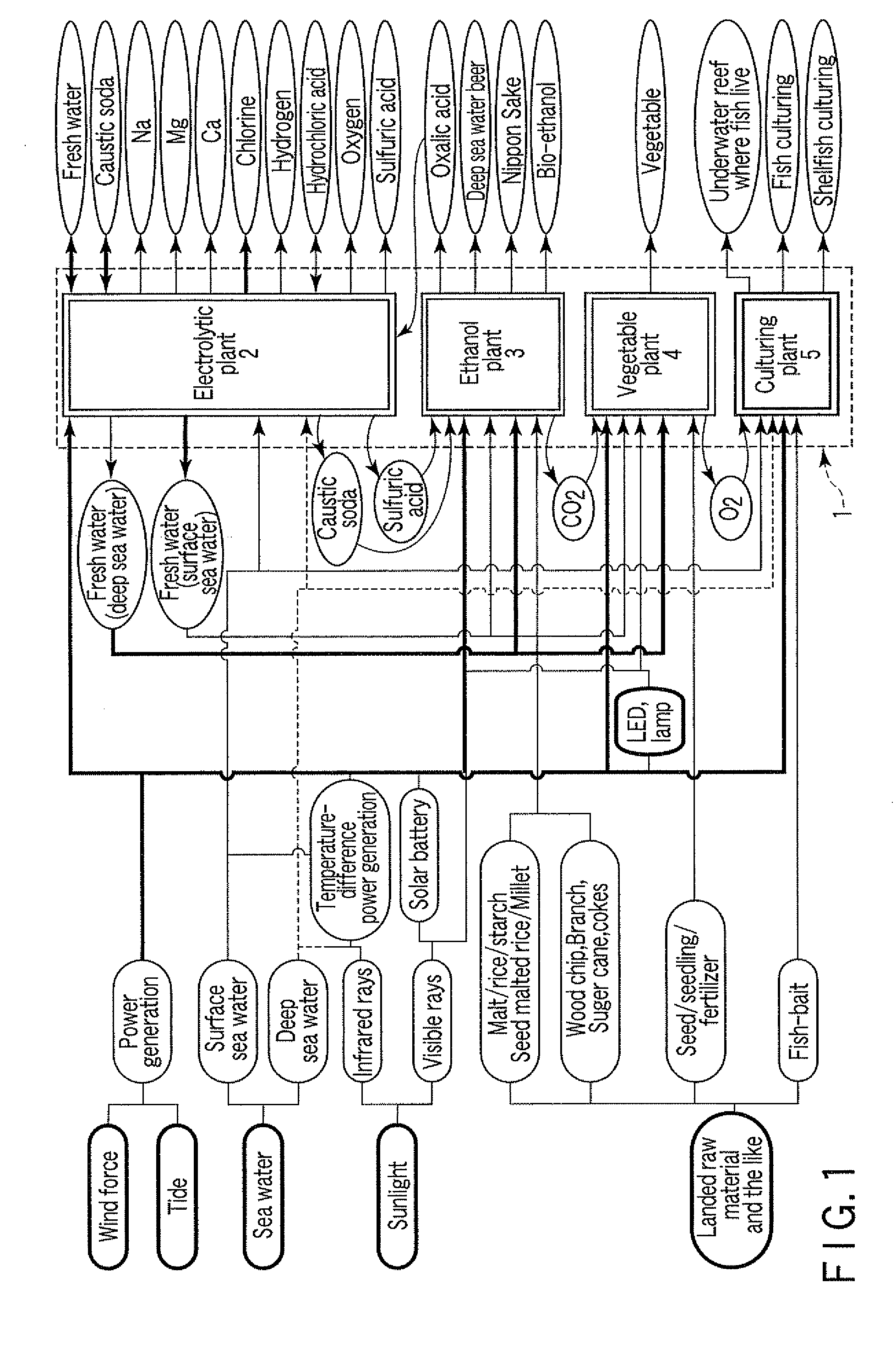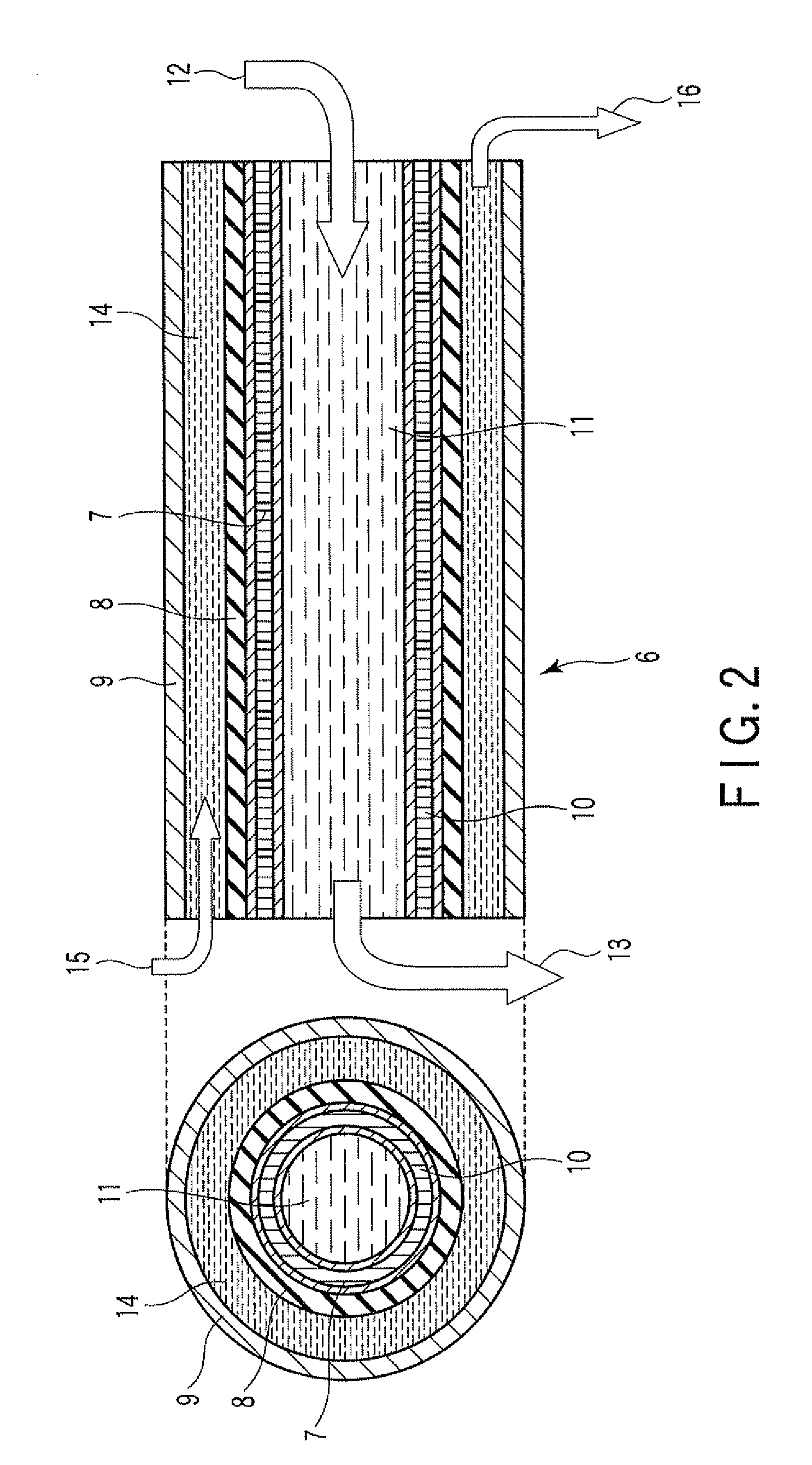Onsite integrated production factory
- Summary
- Abstract
- Description
- Claims
- Application Information
AI Technical Summary
Benefits of technology
Problems solved by technology
Method used
Image
Examples
Embodiment Construction
[0098]Several embodiments of the present invention will be explained in detail with reference to FIG. 1 to FIG. 21.
[0099]FIG. 1 is a schematic view showing an embodiment of the present invention. As shown in FIG. 1, an onsite integrated production factory 1 according to the present invention includes an electrolytic plant 2, an ethanol plant 2, a vegetable plant 3 and a culturing plant 4 and these factories 2 to 4 are installed in a floating body vessel floated on the ocean, a structure on the coast or a structure on the land adjacent to the seashore. The energy obtained by fluid energy power generation utilizing wind and tide, temperature-difference power generation utilizing hot water heated by the infrared ray of sunlight or high-temperature hot spring water such as submarine hot spring and coastal hot spring, and sea water or river water, or solar cell power generation utilizing the visible rays of sunlight or the like are supplied to the integrated production factory 1. The mai...
PUM
 Login to View More
Login to View More Abstract
Description
Claims
Application Information
 Login to View More
Login to View More - R&D
- Intellectual Property
- Life Sciences
- Materials
- Tech Scout
- Unparalleled Data Quality
- Higher Quality Content
- 60% Fewer Hallucinations
Browse by: Latest US Patents, China's latest patents, Technical Efficacy Thesaurus, Application Domain, Technology Topic, Popular Technical Reports.
© 2025 PatSnap. All rights reserved.Legal|Privacy policy|Modern Slavery Act Transparency Statement|Sitemap|About US| Contact US: help@patsnap.com



